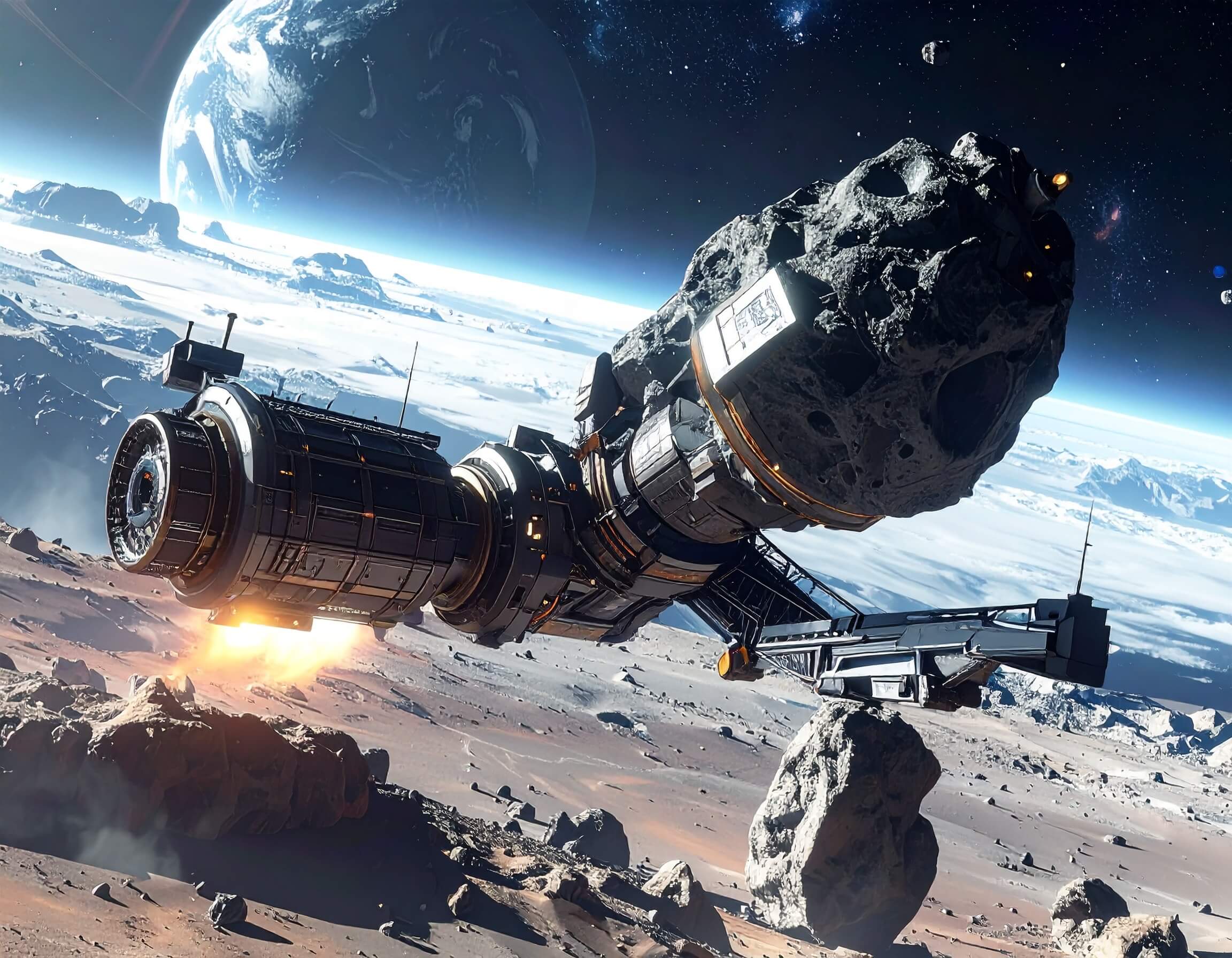Asteroid mining has transitioned from science fiction to serious scientific and commercial interest. By 2025, advances in robotics, spacecraft technology, and resource identification have made extracting valuable minerals from near-Earth asteroids a tangible goal. These celestial bodies are rich in metals like platinum, gold, and rare-earth elements, as well as water, which can be used for fuel and life support systems in space missions.
1. Why Asteroids?
Asteroids are considered prime targets for space resource extraction because they contain high concentrations of valuable materials. Unlike Earth, which requires extensive mining infrastructure, asteroids present a low-gravity environment, reducing energy costs for material extraction and transport. Water from asteroids can be split into hydrogen and oxygen for rocket fuel, enabling in-space refueling and supporting deep-space missions.

2. Near-Earth Asteroids and Selection Criteria
Not all asteroids are equally accessible. Scientists prioritize near-Earth asteroids (NEAs) with orbits that approach Earth, making them reachable with existing propulsion systems. Spectroscopic analysis identifies asteroids rich in metals or water, enabling mission planners to select targets that maximize resource yield while minimizing travel time and fuel consumption.
3. Robotic Mining Technologies
Human presence on asteroids is extremely challenging; therefore, autonomous and semi-autonomous robots are essential. Robotic miners are designed to operate in microgravity, collect surface materials, process ores, and store resources for transport. Technologies include drills, scoops, and thermal mining systems that extract volatiles without contaminating equipment or mission habitats.
4. Resource Processing and Utilization
Once extracted, materials can be processed on-site or in orbital facilities. Metals like platinum and nickel have high commercial value on Earth. Water extracted from asteroids can support human habitats or be converted into rocket fuel. Processing in space reduces launch costs and enables a sustainable space economy, laying the foundation for future exploration missions to Mars and beyond.

5. Commercial Ventures and Investment
Companies such as Planetary Resources and Deep Space Industries are leading private initiatives for asteroid mining. Governments are also exploring policies to regulate space resource utilization, balancing commercial interests with international treaties. The potential for high returns has attracted investors, making asteroid mining an emerging industry in space economics.
6. Legal and Ethical Considerations
Asteroid mining raises legal and ethical questions. The Outer Space Treaty establishes that celestial bodies are not subject to national appropriation, but ownership of extracted resources remains a debated issue. Ethical considerations include ensuring that space exploitation does not harm celestial environments or lead to monopolization by private entities.
7. Scientific Benefits
Mining missions also contribute to planetary science. By analyzing asteroid composition, scientists gain insights into the formation of the solar system, the distribution of metals, and the presence of organic molecules. These missions help answer fundamental questions about planetary evolution and the origin of life.
8. Challenges and Risks
Asteroid mining faces technological and operational challenges. Microgravity complicates excavation, and debris can pose hazards to spacecraft. Communication delays and autonomous operation require highly reliable AI systems. Mission failures can be costly, but advancements in robotics, AI, and propulsion continue to reduce these risks.
9. The Future of Asteroid Mining
Looking ahead, asteroid mining could revolutionize space exploration. In-space manufacturing using asteroid resources may enable construction of space habitats, satellites, and spacecraft without launching materials from Earth. Water and fuel from asteroids can support Mars missions, lunar bases, and interplanetary travel, creating a self-sustaining space economy.
10. Economic and Global Impacts
Asteroid mining has the potential to reshape global economics by providing rare metals and resources that are scarce on Earth. It may also spark technological innovation, create high-tech jobs, and strengthen international collaboration in space. Responsible regulation will be crucial to ensuring equitable access and preventing monopolization.
Conclusion
In 2025, asteroid mining is transitioning from concept to reality. By combining robotics, autonomous systems, and space infrastructure, humanity is poised to extract resources from near-Earth asteroids, fueling both commercial ventures and scientific exploration. These efforts mark a new era where space becomes a practical and sustainable frontier for resources, innovation, and human expansion.

